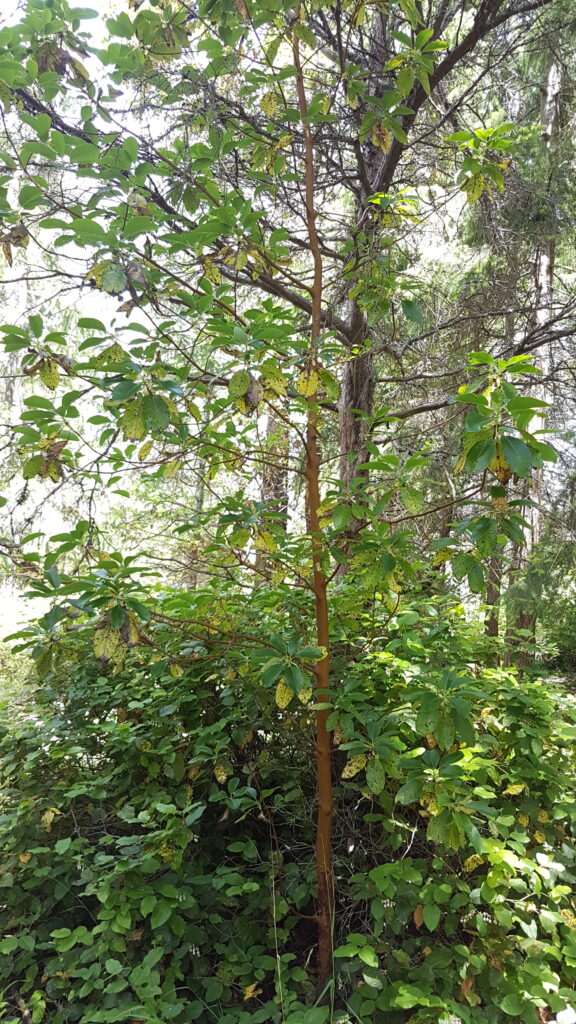
Pacific Arbutus (Arbutus menziesii)

Arbutus trees are the only native broad-leafed evergreen trees in Canada. The bark is very distinctive; the young bark is pale green, and the older bark is red-brown and peeling. The young bark is green because it contains chlorophyll, which allows the tree to photosynthesize through its bark as well as its leaves. The trees grow clusters of white flowers in the spring, which form small red berries in the fall. Arbutus trees generally live in dry, sunny, and rocky habitats, often alongside Garry oaks or Douglas-fir trees.

A tea made from arbutus bark and leaves was used by First Nations on the Northwest Coast as a treatment for stomach aches, colds, and cramps. Also, the bark contains tannins, which make it useful for tanning animal hides. The wood from arbutus trees is often crooked so it is not generally cut for timber, but can be used for carving.

Arbutus trees attract many native pollinator species. Most of its pollinators are bees, but it is also pollinated by the Rufous hummingbird. Its berries also provide a food source for many other bird species, and its branches are often used as a nesting site. Arbutus is also important for its role in preventing soil erosion. The roots stabilize the soil, and also reduce runoff by taking up water. Since arbutus trees live in rocky areas, this is extremely important in order to conserve the limited amount of available soil to allow other plant species to grow.
For more information, visit the Pacific arbutus Wikipedia page or E-Flora BC.


